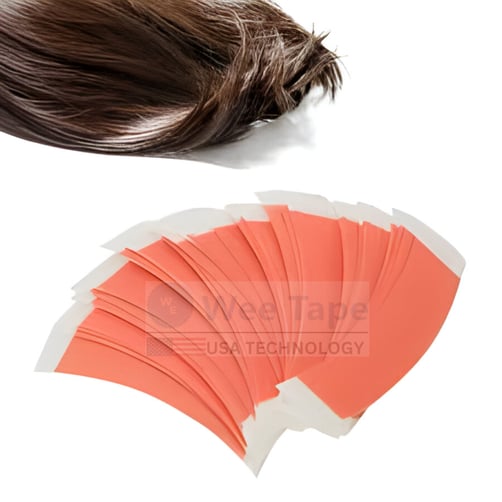Mastering the Do's and Don'ts of Wearing a Hair Wig: A Comprehensive Guide
Mastering wig care, caring for wigs, and wig styling techniques are crucial for maintaining a flawless look. This guide unfolds comprehensive insights into customizing, styling, and the essential upkeep of wigs, paving the way for enhanced confidence through adept wig maintenance and care
Weetape
1/31/20243 min read


Mastering the Do's and Don'ts of Wearing a Hair Wig: A Comprehensive Guide
Choosing a wig can provide a sense of control during a challenging time, empowering individuals with the do's and don'ts of wearing a hair wig to boost their confidence significantly. It is often recommended to start exploring wig options while still retaining some natural hair, optimizing wig wearing tips for a smoother transition.
Mastering wig care, caring for wigs, and wig styling techniques are crucial for maintaining a flawless look. This guide unfolds comprehensive insights into customizing, styling, and the essential upkeep of wigs, paving the way for enhanced confidence through adept wig maintenance and care.
Wig Maintenance and Care
Wig maintenance and care are pivotal for preserving the quality and appearance of your wig, ensuring it lasts longer and remains as natural-looking as when you first purchased it. Here are some essential tips:
Washing and Conditioning:
Prep: Smooth the wig hair with a wide-tooth comb to prevent tangling during washing.
Wet: Gently pour lukewarm water over the wig.
Wash: Use specially designed shampoo, applying it carefully and then rinsing thoroughly.
Condition: Apply conditioner, leave it for a few minutes for absorption, and rinse .
Dry: Opt for air drying by placing the wig on a stand or use a blow dryer on a low heat setting for natural hair wigs .
Daily Care and Storage:
Detangling: Brush your wig gently with a wig brush or comb, starting at the ends and working up to avoid damaging the fibers.
Styling: Use only products specifically designed for wigs and apply them sparingly to maintain the wig's quality and appearance.
Storage: When not in use, store your wig on a wig stand or mannequin head to keep its shape and prevent tangling.
Avoiding Common Mistakes:
Excessive Heat: Avoid using high heat on synthetic wigs as it can damage the fibers. For human hair wigs, use heat protectant sprays and low heat settings.
Wrong Products: Using products not specifically designed for wigs can lead to build-up and damage. Opt for wig-specific shampoos, conditioners, and styling products.
Rubbing Dry: After washing, gently press the wig between two towels to remove excess water instead of rubbing it dry to avoid tangling and damage.
Following these guidelines will help maintain the integrity of your wig, ensuring it remains a key part of your beauty regimen for as long as possible.
Common Mistakes to Avoid When Wearing a Wig
Avoiding common mistakes when wearing a wig is crucial for both the appearance and longevity of the wig, as well as the health of your natural hair. Here are some key points to keep in mind:
Securing Your Wig Properly:
Always ensure your wig is properly secured with an adhesive, wig tape, or wig grips to prevent it from slipping.
Use the correct amount of wig tape and ensure it's compatible with your wig to avoid damage.
For additional support, consider using non-slip grip bands, adjusting the velcro straps, or the metal stays in the ear tabs.
Caring for Your Natural Hair:
Do not neglect your natural hair. Keep it moisturized, wash it regularly, and remove the wig as soon as possible to let your scalp breathe.
Before wearing a wig, braid your hair into pigtails or comb it straight back. Secure your natural hair by pinning it down or wrapping it up to ensure a smooth surface.
Placement and Use of Accessories:
Be mindful of the wig's placement on your forehead. Create a natural hairline by placing the wig slightly in front of your natural hairline.
Avoid wearing your wig too low on your forehead or too far forward. It should be placed exactly at your hairline for a natural look.
Utilize pins, clips, or a textured wig band to further secure the wig.
Remember, practicing wig wearing at home and in public places can help build confidence and ensure you're comfortable with the fit and appearance of your wig throughout the day.
Conclusion
The significance of mastering the do's and don'ts in wig wearing cannot be overstated, as it plays a crucial role in not only the aesthetic outcome but also in promoting a positive wig-wearing experience. It encourages self-expression and provides a sense of control and empowerment for those seeking to redefine their look. By adhering to these guidelines, individuals can enjoy the transformative power of wigs, confidently embracing change while preserving the health and integrity of their natural hair and their chosen wig.


